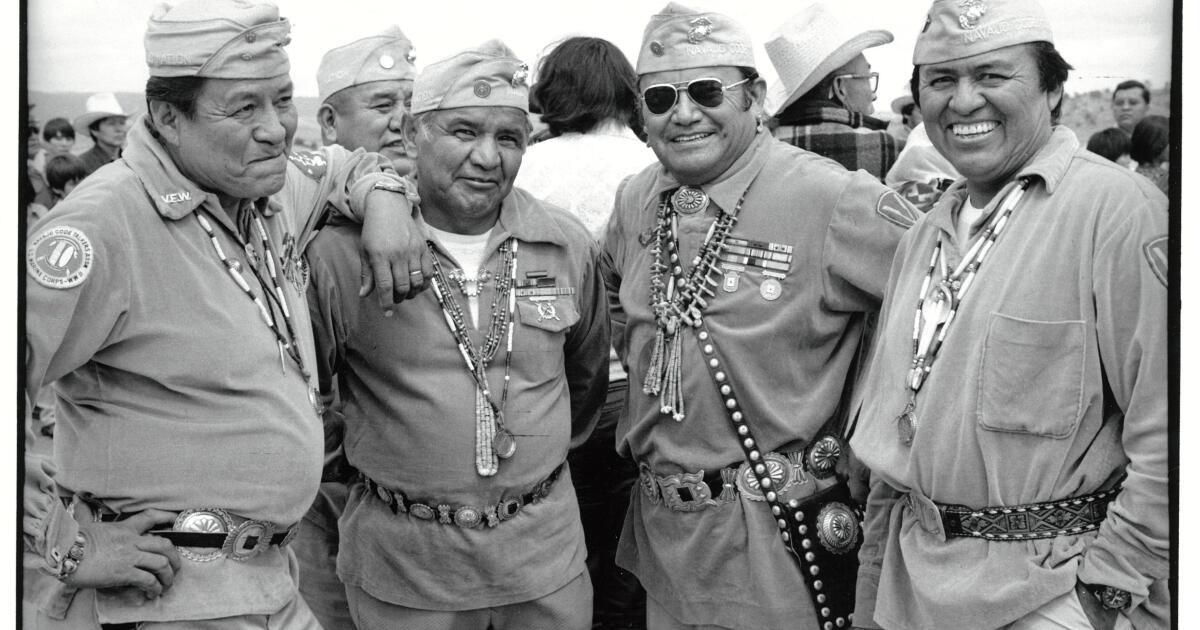To the editor: History is full of ironies, including the story of the incredibly successful Navajo code talkers during World War II. As a Seneca/Apache Native American, I thank The Times for its article on the code talkers and photographer Kenji Kawano, who met several of the code talkers long ago.
Here's the irony: the Navajo language itself, central to this story, was targeted by the US government for elimination.
Beginning in the 1860s, Native American children were separated from their families and forced to attend boarding schools. For the U.S. government, its policies of dispossessing Native Americans and colonizing their lands amounted to “kill the Indian, save the child.” That was the mission of the Indian boarding schools.
Fortunately, the Navajo language survived.
It is also ironic that Kawano, being Japanese, decided to photograph and embrace the Navajo people, whose language was instrumental in defeating Japan in World War II.
The US Marine Corps says the Navajo code was the only military code that was never violated by an enemy in modern history. It saved thousands of American lives in World War II, but the code talkers returned home without praise or honor for their crucial achievement—yet another irony.
Harold Printup, Mar Vista
..
To the editor: As I read your front-page article on the Navajo Code Talkers, I thought about recent criticism that paints the Times as too subjective in its coverage. This article was great journalism on a historical topic worthy of journalism itself.
Then I read your article about the closing of the In-N-Out store in Oakland, another objective, well-written, well-researched article about out-of-control crime. All sides of the divisive issue were covered.
I grew up with the Times sports section open on our breakfast table. Jim Murray will always be one of my literary heroes. His writing prompted me to read more of the article.
Today as then, I smile and frown as I read The Times, and I understand that neither conservatives nor liberals will ever be happy with every story, but that's a good thing.
Robert G. Ferguson, Atascadero, California.
..
To the editor: The moving and deeply moving account of how Kawano gained the trust of the Navajo code talkers over time and gradually revealed their stories, in beautifully captured words and images, leaves an indelible afterthought.
The Japanese Americans I grew up with in Honolulu in the 1950s hid their stories for years under the code of “shikata ga nai”(can’t be helped), until their children and grandchildren gently and reverently led them into the light.
Nicholas Hormann, Pasadena
..
To the editor: The black and white photograph of four Navajo code talkers included in this article captures much of the essence of these men: confidence, joy and pride.
This is the stunning work of a true visual genius who understood the power of black and white photography.
Frederick Miller, Los Angeles











